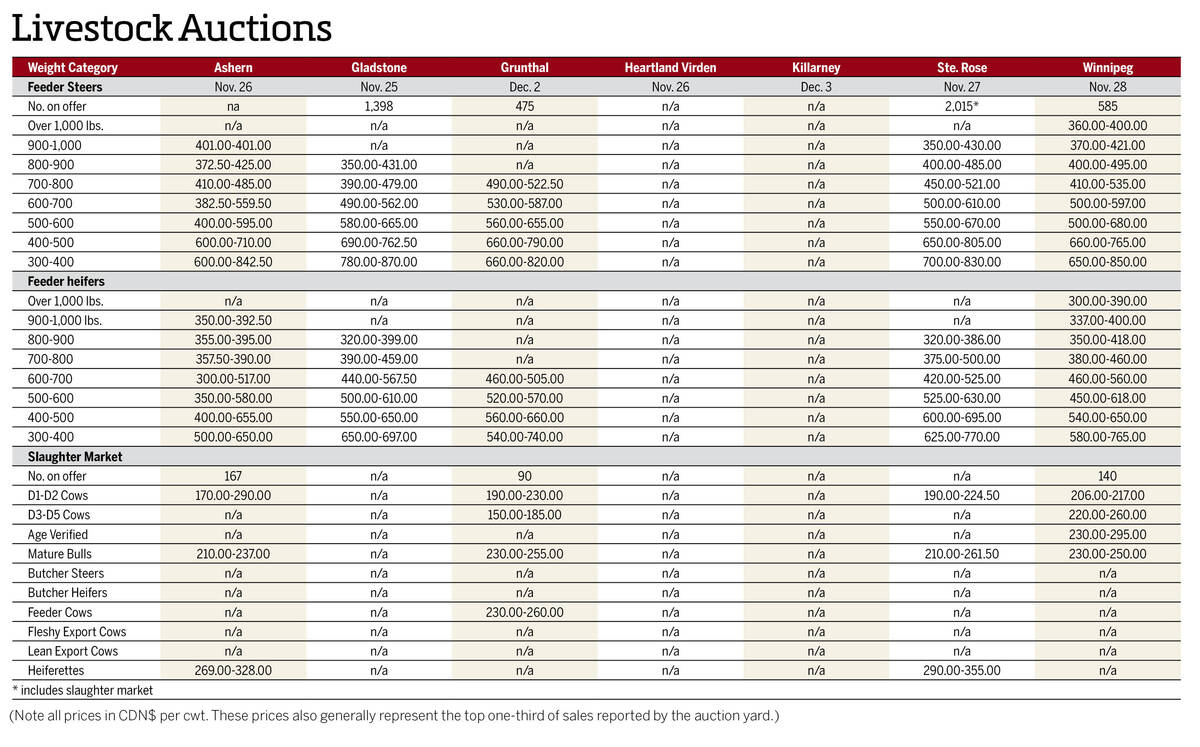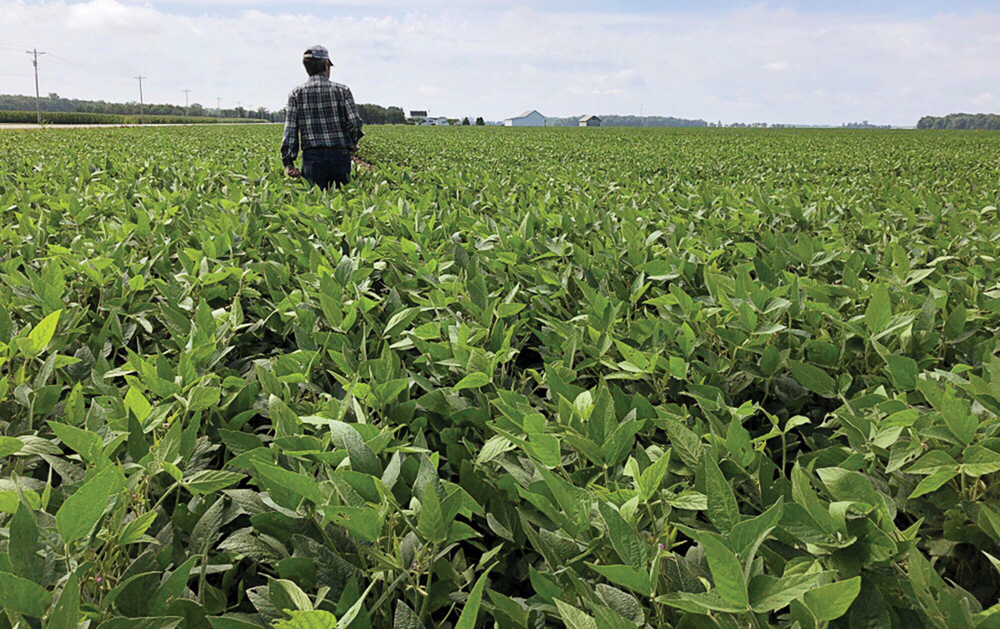The main part of harvest is set to begin for canola, so you might think the influx of new crop into the market would cause prices to come down.
But like any good friend, soyoil is there to give canola prices a pick-me-up.
While the ICE futures November canola contract and October Chicago soyoil went in the same direction roughly half the time over the past month, the two contracts frequently seem to mirror each other. Wherever soyoil goes, canola goes along for the ride.
Read Also

Manitoba cattle prices, Dec. 3
Cattle prices from Manitoba’s major livestock auction marts during the week Nov. 25-Dec. 2, 2025.
This was evident on Aug. 22 when October soyoil lost 2.44 U.S. cents per pound and November canola fell C$13.40 per tonne in turn. The next day, October soyoil regained 1.16 U.S. cents/lb. and November canola recovered C$10.50/tonne.
Drought continued over much of the U.S. High temperatures and little precipitation over the past week damaged soybean crops. Traders paid particular attention to the ProFarmer Crop Tour, which took place across the U.S. Midwest Aug. 22-25. Soybean pod numbers in Illinois, Indiana and Nebraska were slightly above last year’s, but were down in Iowa.
Nevertheless, the heat’s effect on pods still in the filling stage will hinder quality and production. The U.S. Department of Agriculture’s estimated 2023-24 soybean carryout of 245 million bushels may tighten even further.
The lack of soybeans will likely give a lift to canola prices, which may also face their own issues with tight supply. Statistics Canada will release its first model-based supply/demand estimates for 2023-24 on Aug. 29, with the trade estimating production at 17.4 million tonnes. That would be 730,000 less than the year before.
Varied growing conditions across the Prairies, as well as skepticism behind StatCan’s methodology, give plenty of reasons to concur that the figure may be an overestimate.
One trader told MarketsFarm on Aug. 23 that the figures in StatCan’s report will be as of July 31 and the trade may instead focus on next month’s report from Agriculture and Agri-Food Canada. However, the same trader also said canola “may have some upside over the next week or two.”
Despite the prediction, both canola and soyoil are giving indications of upcoming price declines. The December canola and October soyoil contracts were above their 20-, 50- and 100-day moving averages as of Aug. 24. Both canola and soyoil are in net long positions, of 9,170 and 48,444 contracts respectively, as of Aug. 15.
Still, weather can be the ultimate wild card when it comes to commodity markets. If temperatures continue to soar and soybean crops remain parched in the U.S. Midwest over the next two weeks as predicted, the U.S. soy complex along with canola will rise with the heat.
















